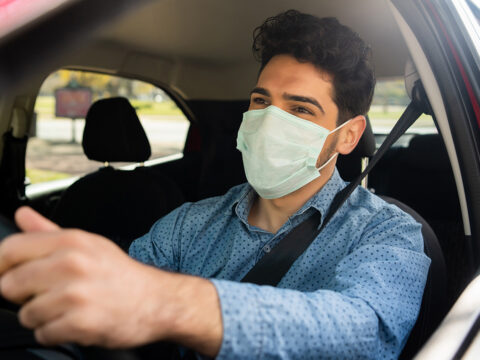
What is Prediabetes?
April 28, 2021
Type 2 Diabetes: Is It An Autoimmune Disease?
April 28, 2021Defining the Condition
Diabetic ketoacidosis (or DKA) is a grave complication associated with type 1 diabetes and to a lesser extent with type 2 diabetes. DKA occurs when your blood glucose is extremely high, and acidic substances known as ketones accumulate to alarming levels in your body. DKA occurs only when your body fails to produce enough insulin to process high blood sugar levels. The condition is less common in individuals with type 2 diabetes as the level of insulin does not drop so low. That said, it can occur. DKA is often the first sign of type 1 diabetes. [1]
Symptoms
Symptoms of DKA tend to manifest quickly and may include:
- Frequent urination
- Excessive thirst
- High blood glucose levels
- High level of ketones in your urine
- A sense of nausea or vomiting
- A state of confusion
- Breath that is “fruity-smelling”
- A flushed face
- Tiredness and fatigue
- Rapid and quick breathing
- Dryness in the mouth and skin [1]
When to Call a Doctor and Course of Action
DKA is classified as a medical emergency. Contact your doctor immediately if you experience the symptoms of DKA. When left untreated, DKA can lead to coma or, even, death. If you make use of insulin, make it a point to discuss the risks with your doctor and make adequate plans. In case of type 1 diabetes, you must have an adequate supply of urine ketone tests to be performed in your home. You must test your urine for presence of ketones if you are diagnosed with type 1 diabetes and your blood glucose level is higher than 250 mg/dL (milligrams per deciliter). [1]
Treatment
Treatment generally involves a combination of steps to normalise insulin and blood glucose levels in your body. If you are diagnosed with DKA but not with diabetes, your doctor will most probably help in the creation of a diabetes treatment plan to prevent the second onset of ketoacidosis. If some other illness or infection is the cause of your DKA, you may be treated with antibiotics. [1]
- Fluid Replacement: If you are admitted to a hospital, you may be administered fluids, either orally or through IV (Intravenous). Fluid replacement helps combat dehydration, which can cause a spike in blood sugar levels.
- Insulin Therapy: Another treatment plan involves administering insulin through IV, until your blood glucose level is below 240 mg/dL.
- Electrolyte Replacement: If your insulin levels are abnormally low, then the level of electrolytes in your body, too, becomes low. Electrolytes help in the proper functioning of your heart and nerves and are administered commonly through an IV. [1]
Causes
- Not injecting sufficient insulin or missing out on an insulin dose
- Infection or illness
- A clog in your insulin pump (if you are using one) [1]
Risk Factors
Your risk of developing DKA is higher if you:
- Are diagnosed with type 1 diabetes
- Are below the age of 19
- Have experienced physical or emotional trauma
- Are stressed out
- Have a high fever
- Have had a stroke or a heart attack
- Smoke
- Are addicted to alcohol or narcotic substances [1]
Diagnosis
The most common way to diagnose DKA is testing your urine sample for the presence of ketones. You may be asked to test your blood glucose levels, too. Other tests include:
- Basic blood work, including sodium and potassium, to know your metabolic function
- Arterial blood gas, where blood from an artery is drawn out to know its acidity
- Blood pressure
- If you are ill, a chest X-ray and other tests may be conducted to determine infection, like pneumonia [1]
Prevention
Proper management of your diabetes is the best way to prevent onset of DKA. Hence, you should:
- Take your medications as prescribed
- Adhere to your meal plans and stay hydrated
- Test your blood sugar at regular intervals
- Take your insulin injections on time everyday [1]
The Final Word
DKA is a serious condition; however, it can be prevented. Adhere to your treatment plan and be proactive when it comes to your health.[1]
References Link:




